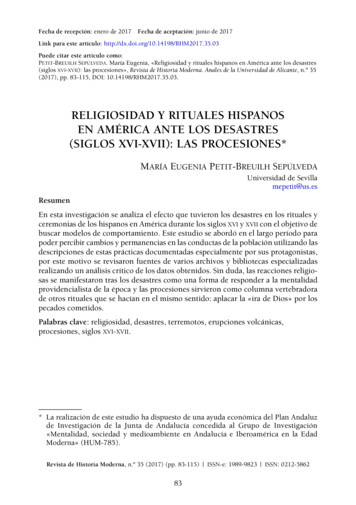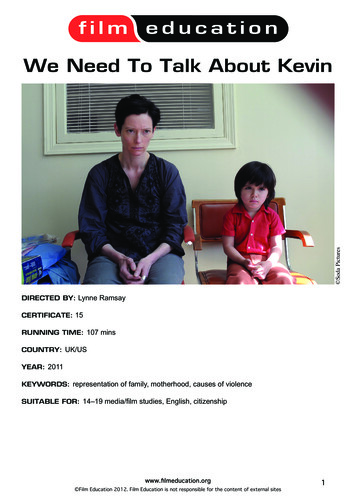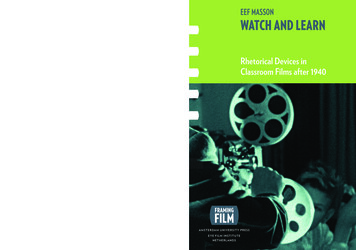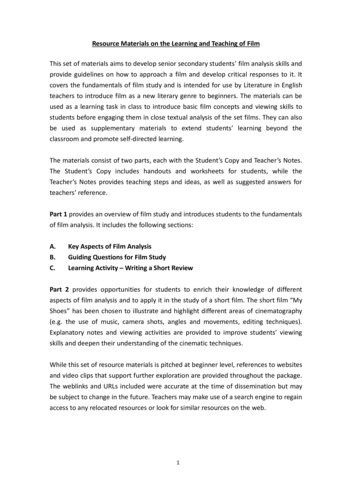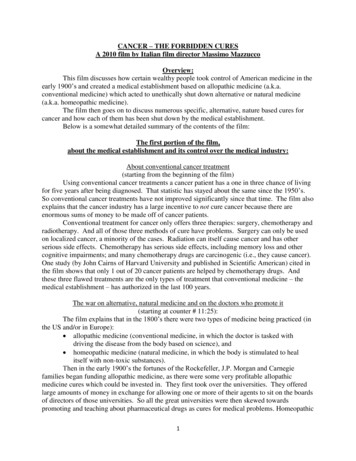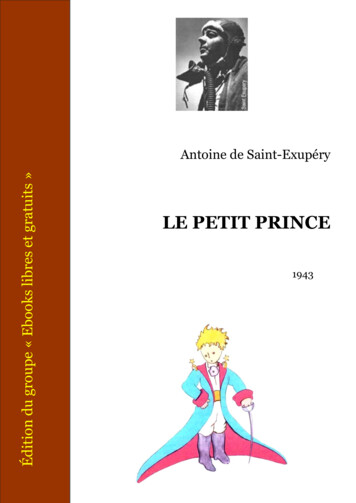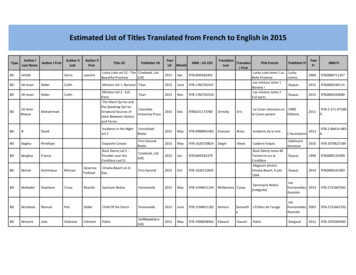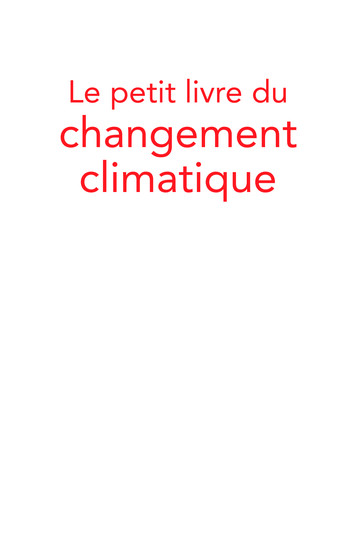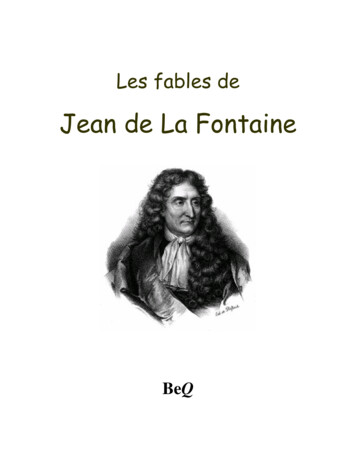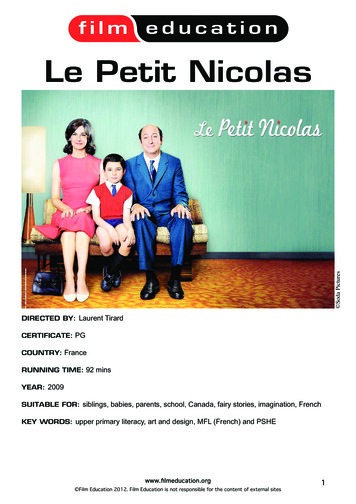
Transcription
Soda PicturesLe Petit NicolasDirected by: Laurent TirardCertificate: PGCountry: FranceRunning time: 92 minsYear: 2009Suitable for: siblings, babies, parents, school, Canada, fairy stories, imagination, FrenchKey words: upper primary literacy, art and design, MFL (French) and PSHEwww.filmeducation.org Film Education 2012. Film Education is not responsible for the content of external sites1
SYNOPSISLe Petit Nicolas is based on the best-selling books chronicling the adventures of Nicolas, amischievous French schoolboy. When Nicolas overhears his parents talking about a new arrival,he knows it can only mean one thing: a baby! Convinced they are making plans to abandon him inthe forest to make room for his sibling he enlists the help of his fellow classmates to make sure hewill survive.Background Information The film is based on a series of books written by Rene Goscinny and illustrated byJean-Jacques Sempe in the late 1950s. The writer, Rene Goscinny wrote Le Petit Nicolas in 1959, the same year that he also wrotethe first of the Asterix cartoon series of books. Asterix is a Gallic villager who embarks on variousadventures as he resists the Roman occupation of France. Asterix is fairly well known in the UK, whereas not many people will have heard ofLe Petit Nicolas. Le Petit Nicolas is a household name in France. Most children will grow up having read thebooks. The film topped the French box office when it opened in France in 2009. The title sequence of the film is inspired by Jean-Jacques Sempe’s original cartoon-like drawingsfor the books. Soda Pictures The director of the film, Laurent Tirard is the director of the latest Asterix movie.www.filmeducation.org Film Education 2012. Film Education is not responsible for the content of external sites2
Film Education 2012. Film Education is not responsible for the content of external siteswww.filmeducation.org3PSHE Create a voiceover forthe film’s trailer – in French.Describe the France that isdepicted on screen. What makesthe film ‘French’?MFL The musical score is rich andvaried. Describe how the musichelps to convey the scarinessof the forest. Which instrumentscan you hear? Compose a pieceof music that conveys Nicolas’mood when he realises hisparents do love him after all.Music Nicolas goes through manydifferent emotions in the film– from happiness, to fear, tosadness to happiness again,all because he’s scared hisparents will stop loving him ifthey have another baby. Imaginehe is your friend. What advicewould you give to him about hispredicament?Le Petit Nicolascross-curricularproject prompts forprimary schoolsArt/DT The film has a distinctivestyle – the colours, clothes,furniture, artwork and music isall very 1950s. Research 1950sprints and create a Petit Nicolasmoodboard – or do a classroom‘make over’ in the style of thefilm. The boys decide to cleanNicolas’ house to impress hisparents. Unfortunately, theirknowledge of materials andtheir properties is not great, andthey choose the wrong actionsand cleaning agents to get thejob done. Make an instructionalvideo on how to clean a houseproperly.Science Stories from other cultures.How does this film compare toa British movie about schools?What is the same? What isdifferent? Discuss setting; style;characters; plot.LiteracyPE Nicolas’ father wanted to be asporting champion before he gotmarried. In the style of the film,create a class movie showingthe pupils competing in theirbest sport, or dancing.
BEFORE SEEING THE FILMCONTEXTThe film tells the story of Nicolas, desperate to change his fate when he believes his mum and dadwill abandon him in the forest if they have a new baby. Nicolas and his friends try everything: frommagic potions, to peddling a roulette wheel on the street corner in order to raise money for Nicolas’cause. There is a strong element of friendship and support networks – Nicolas is surrounded byhis band of boys, all with their own unique personalities, strengths and weaknesses. Childrencould create their own film poster showing their group of special friends, labeling each one with aword that sums up their personality.FamiliesWhilst Nicolas’ parents often argue, they love each other, and they adore their son. Other boys inhis group are not so lucky – one of them never sees his dad as he’s always working and anotherfeels neglected since the arrival of a new baby. Children could talk about their own experiences offamily – and their feelings about working parents; new siblings and school life.AFTER SEEING THE FILM Create a story graph showing the funniest moments – for example when the boys go to theflower shop, or when they visit the doctor. The story is narrated by Nicolas, but what if it were told by one of the other boys? Tell the storythrough the different viewpoints of each character. How would Coltaire (always ‘bottom of theclass’) and Agnan (the ‘teacher’s pet’) describe the story? Soda Pictures There are two teachers in the school. Become an Inspector and write an account of eachteacher’s style. Which one would be your preferred teacher and why?!www.filmeducation.org Film Education 2012. Film Education is not responsible for the content of external sites4
Teachers’ NotesShot, pair, shareExplore and analyse the two images on the next page as a way of critically evaluating the film.The frameDescribe what you can see in the shot. Where is the camera placed? Why is it placed in thisposition? Why not high up? Or low down? Or from far away? Or close-up? What is not shown inthe shot?Colour / lightHow is the scene lit? Are there contrasts between light and shadow? Why is it lit this way?What are the key colours in the scene? Do any colours stand out more than any others? Why?What does this tell us about the mood of the scene and the character?Mise en scèneThis means, ‘everything in the frame’, or the way information is communicated through a singleshot. Describe the props, furniture, body language and facial expressions. Look at the details ofthe shot. Describe how each detail gives us information about the character and the scene’s placein the film’s narrative.MethodologyShotDiscuss each shot as a class. Ask for pupils’ initial reactions: what does each shot tell us about thefilm?PairAsk the children to annotate one or both of the shots in pairs, focusing on framing, colour and lightor mise en scène (or all three).ShareEach pair should then share one or two key observations about the shot.15-MINUTE WRITING OPPORTUNITIESShot oneThis is Geoffroy, whose dad earns a lot of money. Geoffroy is almost always at home alone withhis butler to look after him and pick him up from school. Which would you prefer? A big house, lotsof toys and your own, personal butler, or a dad who is around to play with you and pick you upfrom school? Write the pros and cons of each scenario.Shot twoWrite a thought bubble for each character in the shot showing what’s going on in their minds.Written by Julie Greenwww.filmeducation.org Film Education 2012. Film Education is not responsible for the content of external sites5
Soda PicturesShot One Soda PicturesShot Twowww.filmeducation.org Film Education 2012. Film Education is not responsible for the content of external sites6
Le Petit Nicolas. Le Petit Nicolas is a household name in France. Most children will grow up having read the books. The film topped the French box office when it opened in France in 2009. The title sequence o
